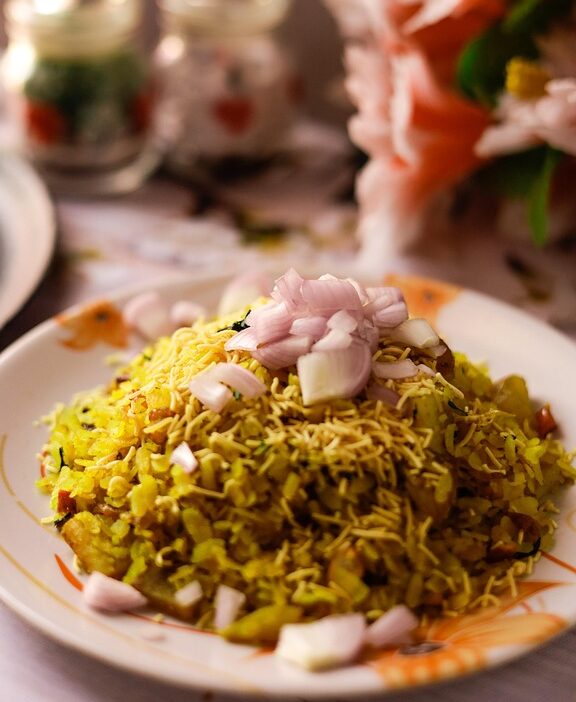When people think of Indian cuisine, images of rich curries and fragrant biryanis often come to mind. While these dishes are indeed culinary treasures, India’s gastronomic landscape is vast and varied, encompassing flavors and ingredients that go far beyond the familiar. Let’s embark on a journey to explore some of India’s lesser-known but equally delightful culinary gems.
The Regional Tapestry of Indian Cuisine
India is a subcontinent with 28 states and 8 Union territories, each offering unique culinary traditions shaped by local ingredients, history, and cultural influences. Exploring beyond the famous curries reveals a stunning variety of flavors and cooking techniques.
1. Bhutte ka Kees (Madhya Pradesh)
In the heartland of India, Madhya Pradesh shines with its offbeat dishes, one being Bhutte ka Kees. This dish is made from grated corn cooked with spices, mustard seeds, and coconut, often served as a snack or side dish. The sweetness of the corn combined with aromatic spices offers a refreshing taste experience, showcasing the local agricultural bounty.
2. Pitha (Bihar and Odisha)
Pithas are rice flour-based delicacies from the eastern parts of India, particularly Bihar and Odisha. These steamed or fried dumplings can be filled with a variety of ingredients, from sweetened coconut to spiced lentils. During festivals, they hold significant cultural importance, representing a connection to the harvest and seasonal change.
3. Khar (Assam)
Hailing from Assam, Khar is a unique dish made using alkaline ingredients, primarily the plantain-like pongamia pinnata. The dish is often paired with rice and showcases the region’s distinctive culinary philosophy, which emphasizes simplicity and freshness. It’s this ingredient that sets Khar apart from other Indian dishes, embodying the essence of Assamese cuisine.
4. Dhokla (Gujarat)
This steamed cake made from fermented rice and chickpea batter is a staple snack in Gujarat. Though gaining popularity across India, many still overlook its roots. Light and fluffy, dhokla is often paired with tangy chutneys, making it a delightful treat for any time of day. Its combination of heat, sweetness, and sourness encapsulates the vibrant flavors of Gujarati cuisine.
5. Naga Pork Curry (Nagaland)
Northeast India offers a treasure trove of culinary delights, and one of its signature dishes is Naga Pork Curry. Cooked with local herbs and fermented bamboo shoots, this dish packs a punch. The use of smoke-dried meats and fresh greens showcases the Naga people’s profound connection to their land and resources.
6. Momos (Sikkim and Darjeeling)
These delectable dumplings, often filled with vegetables or meat, hail from Tibetan origins but have become an integral part of Sikkim and Darjeeling street food culture. Steamed or fried, momos are usually served with a spicy chutney, reflecting the region’s vibrant culinary scene and influences from neighboring cultures.
7. Bebinca (Goa)
While often overshadowed by more popular desserts, Bebinca is a traditional Goan layered pudding made with coconut milk, sugar, and eggs. Its complex layers and combination of flavors reveal the historical blend of Portuguese and Indian culinary practices. Bebinca is a festive treat, perfect for celebrating the rich cultural tapestry of Goa.
The Importance of Culinary Exploration
Exploring these hidden culinary gems is not just about savoring new flavors; it also involves understanding the cultural heritage and stories behind each dish. Food in India is a language of its own, telling tales of migration, trade, and adaptation. Every region boasts its unique narratives, and through food, we can appreciate the diversity that India offers.
Embracing Authenticity
In recent years, there has been a shift towards embracing regional cuisines. Chefs and home cooks alike are beginning to celebrate and share these lesser-known dishes, striving for authenticity rather than merely catering to foreign palates. This culinary renaissance invites food lovers to step outside their comfort zones and discover the incredible diversity that Indian cuisine has to offer.
Conclusion
India’s culinary landscape extends far beyond the popular dishes that have captured the world’s attention. By delving into the hidden gems of Indian cuisine, food enthusiasts can experience a rich tapestry of flavors and traditions that celebrate local ingredients and cultural narratives. So, the next time you think of Indian food, remember that there is a treasure trove of unique dishes waiting to be discovered—a true feast for the senses. Happy exploring!



